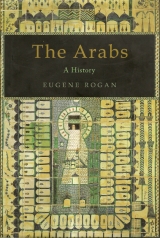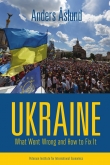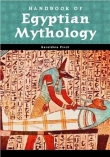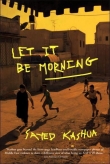
Текст книги "The Arabs: A History"
Автор книги: Eugene Rogan
Жанры:
Военная история
,сообщить о нарушении
Текущая страница: 43 (всего у книги 47 страниц)
The spread of democracy was a recurrent theme in America’s war on terror. President Bush and his neoconservative advisors believed that democratic values and participatory politics were incompatible with terrorism. One of the key advocates of these views was Deputy Secretary of Defense Paul Wolfowitz. In a speech to a foreign policy forum in California in May 2002, Wolfowitz asserted, “To win the war against terrorism . . . we must speak to the hundreds of millions of moderate and tolerant people in the Muslim world . . . who aspire to enjoy the blessings of freedom and democracy and free enterprise.”4 Secretary of State Colin Powell launched his own still-born Middle East Partnership Initiative in December 2002 to bring “democracy and free markets” to the Middle East.5 The Bush administration argued that a democratic Iraq would prove a beacon to the rest of the Arab states and set off a wave of democratization that would sweep the Arab world. The Bush administration’s expectation that democracy would spread like wildfire across the Arab world had little grounding in the realities of the region. The inconvenient truth about democracy in the Arab world is that, in any free and fair election, those parties most hostile to the United States are most likely to win. This is not because of any animosity toward Americans per se, but because Arab voters are increasingly convinced that the U.S. government is hostile to their interests. The war on terror has only confirmed Arab voters in this view. American hostilities against Muslim and Arab states, combined with unconditional American support for Israel, led many Arab citizens to conclude that the U.S. was exploiting the war on terror to extend its domination over their region. This has made Islamist parties who advocate resistance to America more attractive to voters than moderates seeking accommodation with America. Elections in Lebanon in 2005, and in the Palestinian territories in 2006, bear this out. The Palestinians, more than any other Arab people, had grounds to doubt America’s intentions, given U.S. support for Israel. The Palestinian Authority was therefore relieved to see the Bush administration draw Russia, the European Union, and the United Nations?three bodies the Palestinians knew to be sympathetic to their aspirations?into the peace process. Known as the Middle East Quartet, the partnership in April 2003 drafted a ?road map to peace in the Middle East? to give direction to the Bush vision of a two-state solution to the Israel-Palestine conflict first elaborated in his June 2002 speech. There were a number of problems with the Road Map that detracted from its credibility. The Quartet’s peace plan set out an unrealistically ambitious timetable for resolving all of the outstanding differences between Palestinians and Israelis. When Bush formally presented the document to the Israelis and Palestinians in June 2003, he was already off schedule: the first phase of the three-phase plan, in which violence and terror were to be ended and Palestinian life “normalized,” was due for completion in May 2003. The second phase, which was to span the last six months of 2003, was to witness the creation of provisional Palestinian state within temporary borders. The third and final phase was to be completed between 2004 and 2005, during which time Palestinians and Israelis would resolve the final status issues: borders between the two states, the status of East Jerusalem, the resolution of the Palestinian refugee problem, and the future of Israeli settlements in the West Bank and Gaza Strip. By the end of 2005 the states of Israel and Palestine would exchange recognition and declare their conflict at an end. While the Palestinians were in more of a hurry to secure statehood than anyone else, they wanted to see a realistic peace process achieve tangible gains. A plan that raised hopes and then failed to deliver would only leave the Fatah-dominated Palestinian Authority open to criticism from its Islamist opponents. Israel’s attitude towards the Road Map further undermined its credibility as a peace plan. While the Palestinian Authority accepted the Quartet’s plan outright, the Israeli cabinet only approved the peace initiative subject to fourteen reservations. The Palestinian Authority was left clutching to the Road Map to demonstrate their commitment to peace and secure some relief from Israel and America’s war on terror. Their failure to secure any tangible gains through working with the Americans—no progress towards an Israeli withdrawal from Palestinian territories or a halt to settlements, let alone Palestinian statehood—played straight into the hands of the Islamic Resistance Movement, Hamas. Palestinian voters soon got the chance to express their views at the polls. In November 2004 Yasser Arafat, the historic leader of the Palestinian national struggle and besieged president of the Palestinian Authority, died of medical complications in a Paris hospital. Though the Palestinians mourned Arafat, the Bush administration insisted that his death opened opportunities for the Palestinians to elect new leaders “not compromised by terror.” On January 9, 2005, the Palestinians voted for a new president. Fatah leader Mahmoud Abbas won an outright majority of 63 percent to succeed Arafat. The Bush administration applauded the result and declared Abbas a man they could work with. Israeli prime minister Ariel Sharon, on the other hand, refused to deal with Mahmoud Abbas. In 2005, Sharon announced his intention to withdraw all Israeli troops and settlers from the Gaza Strip. Israel’s position in Gaza was untenable, with thousands of soldiers providing securing for 8,000 settlers in a hostile population of 1.4 million Palestinians. Withdrawal from Gaza was popular with the Israeli army and voters. It also allowed Sharon greater freedom to ignore the Road Map, claiming to be pursuing his own peace with the Palestinians. Yet Sharon refused to negotiate with the Palestinian Authority to ensure a smooth handover in Gaza. In so doing, when the Israelis completed their withdrawal from Gaza in August 2005, Sharon left behind a dangerous power vacuum in Gaza and handed Hamas an important victory. The Islamist party naturally took credit for driving Israel from Gaza through their years of resistance. The true extent of Hamas’s gains only emerged in the January 2006 elections for the Palestinian Legislative Council. The two leading parties were Arafat’s Fatah, now under Mahmoud Abbas’s leadership, and Hamas, led by Ismail Haniya. It was widely expected that Hamas would enjoy strong support and reduce Fatah’s majority in the PLC. However, the magnitude of Hamas’s victory was a shock to Palestinians and foreign observers alike. Hamas took 74 of the 132 seats in the PLC. Fatah managed to retain only 45 seats. A party officially boycotted by the United States and the European Union as a terrorist organization won a sufficient majority in an election deemed by international monitors as free and fair to form the next government of Palestine. It was a shattering reversal for America’s war on terror. And the Palestinian people would pay the price. The new Hamas government of Prime Minister Haniya openly rejected the Quartet’s Mid East policies. Haniya refused to recognize Israel, to end armed resistance, or to accept the terms of the Road Map. Consequently, the Quartet cut all assistance to the Palestinian Authority. Until Hamas proved willing to renounce terror, neither the EU nor the U.S. would support a Hamas-led Palestinian Authority—even a democratically elected one.
In Lebanon, the Islamist Hizbullah party also proved its appeal to voters for its politics of resistance against Israel and the United States. The strength of Hizbullah came as a surprise to the Bush administration, which upheld Lebanon as an example of citizens who had succeeded in preserving their democratic rights—in this case from Syrian oppression. Lebanon’s democracy movement, which came to be known in the West as the Cedar Revolution, was provoked by the assassination of former Lebanese prime minister Rafik Hariri on February 14, 2005. Hariri?s son Saad led the nation in mourning, and made clear his belief that Syria was responsible for his father?s violent death. The assassination set off waves of mass demonstrations that brought politics in Lebanon to a standstill. On March 14, one million Lebanese descended on downtown Beirut to demand Syria?s complete withdrawal from Lebanon. The movement met with full support from the United States, which accused Syria of sponsoring terrorism. Under intense international pressure, the Syrian government agreed to withdraw its soldiers and intelligence forces from Lebanon. The last Syrian troops crossed out of Lebanon on April 26. In May and June 2005, the Lebanese public voted to elect a new parliament. The anti-Syrian coalition, headed by Saad Hariri, son of the assassinated premier, won 72 of the 128 seats in the parliament. However, the political wing of the Shiite militia Hizbullah won a solid bloc of fourteen parliamentary seats and, combined with a group of pro-Syrian parties, retained sufficient power within the Lebanese political system to resist any attempt by the central government to force the Hizbullah militia to disarm, in lines with the 1990 Taif Agreement. Even in Lebanon, parties explicitly hostile to the United States fared well at the polls.
For Islamist parties, resistance against Israel paid political dividends. Indeed, so long as they persisted in making bold strikes against the Jewish state, Hamas in Palestine and Hizbullah in Lebanon could count on broad-based political support. They also believed in what they were doing: that fighting against Israel to liberate Muslim lands was a religious duty. In the summer of 2006, both parties escalated their attacks on Israel—with disastrous consequences for both the Gaza Strip and Lebanon. On June 25, 2006, a group of Hamas activists crossed from Gaza to Israel through a tunnel near the Egyptian frontier and attacked an Israeli army post. They killed two soldiers and wounded four others before escaping back to Gaza with a young conscript named Gilad Shalit as their prisoner. On June 28 the Israeli army entered Gaza, and the next day they arrested sixty-four Hamas officials, including eight members of the Palestinian cabinet and twenty members of the Legislative Council. Hamas responded by firing homemade rockets into Israel, and the Israelis in turn deployed their air force to bomb Palestinian targets. Eleven Israelis and more than 400 Palestinians died before a cease-fire was struck in November 2006. Hizbullah’s war with Israel provoked a massively disproportionate response against Lebanon. On July 12, 2006, a group of Hizbullah fighters crossed into Israel and attacked two jeeps patrolling the border with Lebanon. They killed three soldiers, wounded two, and took two others prisoner. This unprovoked attack set off a thirty-four-day conflict in which Israeli ground forces invaded South Lebanon. The Israeli air force bombed key infrastructure and leveled whole neighborhoods in the Shiite southern suburbs of Beirut, displacing an estimated one million civilians. Hizbullah fighters fought fierce battles with Israeli troops in the hills of South Lebanon and kept up a constant barrage of missiles firing into Israel, forcing thousands of Israelis to evacuate the conflict zone. The Lebanese government turned to the United States for assistance. After all, the Bush administration had touted democratic Lebanon as an example to the Middle East and had given its full support to Lebanese demands for Syria to withdraw in 2005. Yet America was unwilling to intervene with the Israelis even to call for a cease-fire in 2006. Because Israel was fighting against Hizbullah, which the United States had branded a terrorist organization, the Bush administration refused to restrain its Israeli ally. In fact, the U.S. government resupplied the Israelis with laser-guided weapons and cluster bombs as the Israeli arsenal was depleted by its intensive bombing campaign against Lebanon. By the end of the conflict, over 1,100 Lebanese and 43 Israeli civilians had died under the aerial bombardment. Among combatants, the UN estimated 500 Hizbullah militiamen killed and the Israeli army reported 117 of their soldiers dead. Israel’s two-front war against Gaza and Lebanon in the summer of 2006 proved to the Arab world—if further proof were needed—that America would back Israel no matter what it did. The Arabs were more convinced than ever that the war on terror was an American-Israeli partnership to impose their full control over the Middle East. Television viewers alternated between images of violence in Iraq, Gaza, and Lebanon and concluded that there would be no peace for the Arab world so long as America pursued its war on terror.
The Middle East remained in turmoil at the end of the Bush presidency. There was some good news in Iraq. The Iraqi people had elected a national government in free elections with high voter turnout. A reinforcement of American troops in Iraq in 2007, known as the “surge,” led to a significant reduction in violence and a return to normal life for many Iraqis. By the end of 2008, the Americans began to reduce troop numbers in Iraq. There were still acts of terrible violence that threatened to overturn that country’s fragile gains. But the end of the American occupation was in sight. The situation for the Palestinians only deteriorated during Bush’s last weeks in office. In March 2007, the Fatah movement and Hamas formed a national unity cabinet with the aim of ending Palestinian isolation and the resumption of much-needed external aid. The unity government proved short lived and broke down in June 2007 when fighting erupted in Gaza between Fatah and Hamas. The dispute between the two parties ended with Hamas in full occupation of the Gaza Strip, and a Fatah-led emergency cabinet ruling the West Bank. The Quartet played upon Palestinian divisions and resumed support of the “moderate” Fatah government in the West Bank, while embargoing assistance to the Gaza Strip, now under Hamas rule. The standard of living in Gaza, cut off from all outside assistance, deteriorated into a humanitarian crisis. The final conflict of the Bush years took place in the Gaza Strip in December 2008 and January 2009. After Hamas had observed a six-month cease-fire with no relaxation of Israeli controls over Gaza’s frontiers, Palestinian militiamen began to fire missiles into Israel. On December 27, Israel’s government responded with dozens of air raids that left nearly 200 Palestinians dead; Israel claimed it was targeting “terrorist infrastructure” in Gaza. The Bush administration urged the Israelis to avoid civilians—this in one of the most densely populated spots on earth—but endorsed the Israeli attack in time-honored war-on-terror fashion. “Hamas must end its terrorist activities if it wishes to play a role in the future of the Palestinian people,” a White House spokesman claimed.6 After eight days of heavy aerial bombardment, the Israeli army sent tanks into the Gaza Strip. Over the next two weeks, the Israelis targeted UN agencies, hospitals, schools, and residential neighborhoods, inflicting physical damage estimated at $1.4 billion on the impoverished Gaza Strip. The bombardment continued until the eve of the inauguration of the new U.S. president, Barack Obama. By the time a cease-fire between the Israelis and Hamas was agreed to, on January 18, over 1,300 Palestinians had been killed and 5,100 wounded. By comparison, only thirteen Israelis died; eight more were wounded. 
With George W. Bush’s departure from the White House on January 20, 2009, the Arab world hoped for an end to his war on terror. With the inauguration of President Obama, the United States entered a new period of constructive engagement with the Arab and Islamic world. In his first hundred days, the new president initiated a number of policies intended to reduce the regional tensions generated by seven years of the war on terror. President Obama set in motion the closure of the Guantanamo Bay Detention Camp and the reduction of the U.S. troop presence in Iraq. He signaled that the Arab-Israeli peace process was a first-term priority, both through the appointment of Senator George Mitchell as his Middle East envoy and by meeting with both Israel’s prime minister and the president of the Palestinian Authority. Obama pursued a policy of rekindling dialogue with states shunned by the Bush administration, like Syria and Iran. Each of these policies was fraught with uncertainty, given the complexity of the history and issues involved. Yet these initiatives provided welcome relief to a region that had suffered years of strain at the center of the war on terror. The clearest expression of this new policy of constructive engagement with the Arab and Islamic world came in Obama?s address to Cairo University in June 2009: ?I have come here to seek a new beginning between the United States and Muslims around the world, one based upon mutual interest and mutual respect,? Obama told his attentive audience. ?There must be a sustained effort to listen to each other; to learn from each other; to respect one another; and to seek common ground.? Though Obama made important points in his forty-minute speech, it was perhaps his tone of mutual respect that gave Arab audiences most hope for the future. If the dominant power of the day could truly move beyond imposing rules on the Arab world and begin seeking common solutions to the issues that we face, the Arabs would indeed be entering a new and better age. Yet constructive engagement by the United States, as the dominant power in a unipolar age, is only part of the solution to the ills that face the Arab world in the twenty-first century. The Arabs too must assume responsibility for a better future. If the Arab peoples are to enjoy human rights and accountable government, security and economic growth, they will have to seize the initiative themselves. History has shown the limits of reform through foreign intervention—in both the colonial age and in the post–Cold War era. Democracy cannot be imposed without the messenger killing the message. There are grounds for hope for positive change in the Arab world today. Between 2002 and 2006, a prominent group of Arab intellectuals and policymakers collaborated on a radical reform agenda. Headed by Jordanian stateswoman Rima Khalaf Hunaidi, the drafters of the Arab Human Development Report focused on three crucial deficits: a freedom deficit of good government in the Arab world; a knowledge deficit, in which the education system ill prepared young Arabs to take advantage of the opportunities in the global market place; and a deficit in the empowerment of women, restraining half the population of the Arab world from making its full contribution to human development in the region. Written by Arabs, for Arabs, the authors of the Human Development Report aspire to nothing less than a new Arab renaissance. Many of the deficits named in the Arab Human Development Report are being addressed in the Arab states of the Persian Gulf today. The wealth provided by oil revenues has given those countries opportunities to connect to the global economy. Their citizens are broadening participation in government through both appointed and elected office—in Kuwait, Bahrain, even Saudi Arabia, with its consultative Shura Council. The Gulf has seen an unprecedented spread of free media, particularly in satellite television, where stations like Qatar’s al-Jazeera or the UAE’s al-Arabiyya broadcast open debates across Arab borders beyond the reach of government censors. And new universities, both national institutions and branch campuses of premier foreign institutions, provide a wider range of educational opportunities and professional training than Arab citizens have ever enjoyed before. For the Arab world to break the cycle of subordination to other people’s rules will require a balanced engagement from the dominant powers of the age, and a commitment to reform from within the Arab world itself. As the region moves from under the shadow of the war on terror, the very beginnings of such a virtuous cycle may be discerned. Yet much more needs to be done by way of conflict resolution and political reform before the Arabs move beyond a history of conflict and disillusion to achieve their potential and fulfill their aspirations in the modern age.
Acknowledgments
In writing this modern history of the Arab world I have been privileged to be part of a remarkable intellectual community in the Middle East Centre of St. Antony’s College in the University of Oxford. The late Albert Hourani, one of the greatest historians of the Arab world, assembled an innovative group of scholars who made the Middle East Centre Europe’s leading university institute for the study of the modern Middle East. From that original fellowship, my emeritus colleagues Mustafa Badawi, Derek Hopwood, Robert Mabro, and Roger Owen have been my mentors since 1991. I have taken full advantage of their deep knowledge of the Middle East, discussing the arguments of this book with them and imposing draft chapters on them for comment. They have been unstinting in their encouragement and constructive criticisms. The current Fellowship of the Middle East Centre has in every way preserved the magic of Albert Hourani’s original community. In Ahmed Al-Shahi, Walter Armbrust, Raffaella Del Sarto, Homa Katouzian, Celia Kerslake, Philip Robins, and Michael Willis, I have generous friends and colleagues who have made daily contributions to this project—in casual conversation over coffee each morning at the Centre, in suggested readings, and in comments on draft chapters. I owe a particular debt of friendship and gratitude to Avi Shlaim, a brilliant and innovative historian of Israel’s troubled history with the Arabs. Avi read every chapter and met with me over lunches in College to give me the most detailed and constructive feedback. His insightful comments have made their impact on every part of the book. I wish to thank the Middle East Centre’s archivist, Debbie Usher, for her generous support for my research in the archive’s rich collections of private papers and historic photographs. I am most grateful to the Middle East Centre’s Librarian, Mastan Ebtehaj, and to the Centre’s administrator, Julia Cook. I have used material from the book-in-progress for my lectures in modern Arab history at Oxford and am very grateful to our astute students for their feedback. I would like to thank Reem Abou El Fadl, Nick Kardahji, and Nadia Oweidat for their help with research for the book. Over the years of writing this book I have exploited family and friends, specialists and nonspecialists alike, to read and comment on draft chapters along the way. Their encouragement and critiques did more to see the book through to completion than they might believe. I wish to acknowledge my debt to Peter Airey, Tui Clark, Foulath Hadid—my tutor in Iraqi history, Tim Kennedy, Dina Khoury, Joshua Landis, Ronald Nettler, Tom Orde, Thomas Philipp—who first inspired me to study the history of the Arabs, Gabi Piterberg, Tariq Ramadan, my brother Grant Rogan, Kevin Watkins, and my brilliant wife Ngaire Woods. I wish to give special thanks to my most persistent and dedicated reader—Margaret Rogan, my mother. She read every chapter of the book from beginning to end without letting a mother’s love blind her to the mistakes that she, a life-long student of the Middle East, found along the way. I am indebted to Serge Fouchard of the Musйe dйpartemental Albert-Kahn in Boulogne-Billancourt for making copies of the extraordinary autochromes from the Albert Kahn collection available for publication. I am also most grateful to Victoria Hogarth of the Bridgeman Art Library and Jeff Spurr of the Harvard Fine Arts Library for their help with images for the book. The book would never have happened without the particular genius of my literary agent Felicity Bryan. I am especially grateful to Felicity for breaking her own rule not to represent her friends. I will ever be indebted to George Lucas for agreeing to represent me in New York and for treating me to an unforgettable introduction to New York’s publishing world. Together they found the very best publishing houses for this book. My deepest thanks at Basic Books go to my editor, Lara Heimert, who through humor and insight has cajoled a better book from me than ever I could have written on my own. Brandon Proia has shared his editorial talents and helped with finding the right images for the book. Kay Mariea and Michelle Asakawa were heroic at copyediting at break-neck speed. At Penguin, I have benefited throughout the writing of the book from Simon Winder’s deep knowledge and penetrating engagement with the manuscript. My family have been my strength and inspiration at every point in writing this book. To Ngaire, our son Richard and daughter Isabelle, I owe the sanity that counterbalances the madness of taking on such a project. Thank you.
Permissions
Section One (between pages 184–185)
1. Private collection. Photo © Christie’s Images/ The Bridgeman Art Library2. Private collection. Photo © Christie’s Images/ The Bridgeman Art Library3. Photograph by Bonfils. Harvard College Library, Fine Arts Library, HSM 6644. Chateau de Versailles, France/ Giraudon/ The Bridgeman Art Library5. Private collection/ © The Fine Art Society, London, UK/ The Bridgeman Art Library6. Harvard College Library, Fine Arts Library, HSM 6207. Chateau de Versailles, France/ Lauros/ Giraudon/ The Bridgeman Art Library8. Musйe Condй, Chantilly, France/ Giraudon/ The Bridgeman Art Library9. Musйe Albert-Kahn–Dйpartement des Hauts-de-Seine, A1548810. Musйe Albert-Kahn–Dйpartement des Hauts-de-Seine, A1556211. Musйe Albert-Kahn–Dйpartement des Hauts-de-Seine, A5104612. Private Collection/Archives Charmet/The Bridgeman Art Library. All best efforts have been made to contact the copyright holder of this anonymous Moroccan work.13. Musйe Albert-Kahn–Dйpartement des Hauts-de-Seine, A1903114. Frйdйric Gadmer, Musйe Albert-Kahn–Dйpartement des Hauts-de-Seine, A1974715. Owen Tweedy Collection, PA 7/216, Middle East Centre Archive, St. Antony’s College, Oxford16. Sir Edmund Allenby Collection, PA 5/8, Middle East Centre Archive, St Antony’s College, Oxford17. Bibliotheque Nationale, Paris, France/ Archives Charmet/ The Bridgeman Art Library Section Two (between pages 246–247)
1. Norman Mayers Collection album 1/40, Middle East Centre Archive, St. Antony’s College, Oxford2. John Poole Collection 115/5, Middle East Centre Archive, St. Antony’s College, Oxford3. John Poole Collection 114/16, Middle East Centre Archive, St. Antony’s College, Oxford4. Sir Edward Spears Collection, Album 8/28, Middle East Centre Archive, St. Antony’s College, Oxford5. Sir Edward Spears Collection, Album 9/75, Middle East Centre Archive, St. Antony’s College, Oxford6. Desmond Morton Collection, 13/1/1, Middle East Centre Archive, St. Antony’s College, Oxford7. Desmond Morton Collection, 13/1/2, Middle East Centre Archive, St. Antony’s College, Oxford8. AP Images9. © Bettmann/Corbis10. © Bettmann/Corbis11. © Bettmann/Corbis12. © Bettmann/Corbis13. © Hulton-Deutsch Collection/Corbis14. © Hulton-Deutsch Collection/Corbis15. © Bettmann/Corbis16. © Bettmann/Corbis Section Three (between pages 336–337)
1. © Genevieve Chauvel/Sygma/Corbis2. © Bride Lane Library/Popperfoto/Getty Images3. © Christian Simonpietri/Sygma/Corbis4. © Bettmann/Corbis5. © Bettmann/Corbis6. © Alain DeJean/Sygma/Corbis7. © Kevin Fleming/Corbis8. © AFP/Getty Images9. © Dominique Faget/epa/Corbis10. © Gйrard Rancinan/Sygma/Corbis11. © Michel Philippot/Sygma/Corbis12. © Franзoise de Mulder/Corbis13. © Franзoise de Mulder/Corbis14. © Peter Turnley/Corbis15. © Reuters/Corbis16. © Reuters/Corbis17. © Peter Turnley/Corbis18. © Abed Omar Qusini/Reuters/Corbis
Notes
Introduction
1 Walid Jumblatt repeated Hariri’s remarks to a journalist from the New York Times, “Behind Lebanon Upheaval, 2 Men’s Fateful Clash,” March 20, 2005.
2 Samir Kassir, Being Arab (London: Verso, 2006), from the author’s introduction.
3 Thomas Philipp and Moshe Perlmann, eds., ‘Abd al-Rahman al-Jabarti’s History of Egypt, vol. 3 (Stuttgart: Franz Steiner, 1994), p. 7.
4 Reproduced in Robert Fisk, The Great War for Civilisation: The Conquest of the Middle East (London: Fourth Estate, 2005), p. 172.
5 Abd al-Razzaq al-Hasani, al-’Iraq fi dawray al-ihtilal wa’l-intidab, vol. 1 [Iraq in the occupation and the mandate eras] (Sidon: Al-Irfan, 1935), pp. 117–118.
6 Kassir, Being Arab, p. 4.
Chapter 1
1 The death of the Prophet Muhammad gave rise to one of the earliest splits in Islam as his followers disagreed over how to choose his successor, or caliph, to head the Muslim community. One group of Muslims argued for succession within the family of the Prophet and championed the candidacy of Ali ibn Abu Talib, who, as first cousin and son-in-law of the Prophet, was his closest relative. This faction came to be known in Arabic as Shi‘at ’Ali, or “the Party of Ali,” from which the word Shiite is derived. The majority of Muslims, however, argued that the caliph should be the most pious Muslim best able to uphold the sunna, or practices and beliefs of the Prophet Muhammad; these came to be known as the Sunnis. For most of Islamic history, the Sunnis have been the dominant majority of the community of believers, particularly in the Arab and Turkish world, with variants of Shi’ite Islam taking root in South Arabia, Persia, and South Asia.
2 The chronicles of Muhammad ibn Ahmad Ibn Iyas (c. 1448–1524), Bada’i‘ al-zuhur fi waqa’i’ al-duhur [The most remarkable blossoms among the events of the age], were first published in Cairo in 1893–1894. There is an English translation of excerpts relating to the Ottoman conquest of Syria and Egypt: W. H. Salmon, An Account of the Ottoman Conquest of Egypt in the Year A.H. 922 (A.D. 1516) (London: Royal Asiatic Society, 1921); and a full translation by Gaston Wiet, Journal d’un bourgeois du Caire: Chronique d’Ibn Iyвs, vol. 2 (Paris: S.E.V.P.E.N., 1960). This account is found in Salmon, Account of the Ottoman Conquest, pp. 41–46, and in Wiet, Journal d’un bourgeois du Caire, pp. 65–67.








